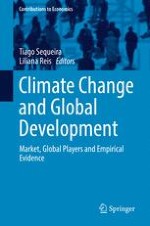2019 | OriginalPaper | Chapter
The Role of Carbon Markets in the Paris Agreement: Mitigation and Development
Author : Henrique Schneider
Published in: Climate Change and Global Development
Publisher: Springer International Publishing
Activate our intelligent search to find suitable subject content or patents.
Select sections of text to find matching patents with Artificial Intelligence. powered by
Select sections of text to find additional relevant content using AI-assisted search. powered by
